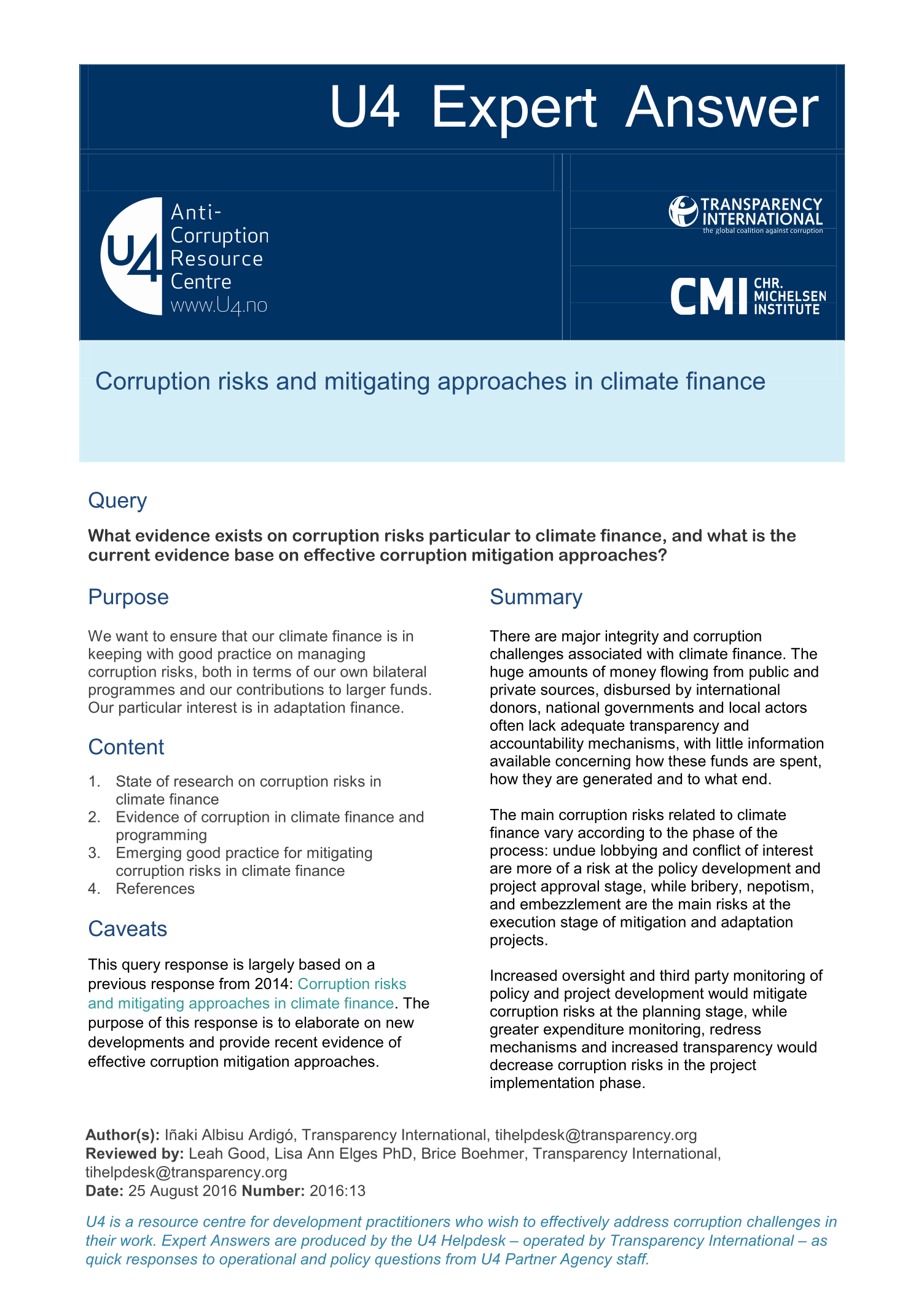U4 Helpdesk Answer
Corruption risks and mitigating approaches in climate finance
There are major integrity and corruption challenges associated with climate finance. The huge amounts of money flowing from public and private sources, disbursed by international donors, national governments and local actors often lack adequate transparency and accountability mechanisms, with little information available concerning how these funds are spent, how they are generated and to what end.
The main corruption risks related to climate finance vary according to the phase of the process: undue lobbying and conflict of interest are more of a risk at the policy development and project approval stage, while bribery, nepotism, and embezzlement are the main risks at the execution stage of mitigation and adaptation projects.
Increased oversight and third party monitoring of policy and project development would mitigate corruption risks at the planning stage, while greater expenditure monitoring, redress mechanisms and increased transparency would decrease corruption risks in the project implementation phase.

Cite this publication
Ardigó, I. (2016) Corruption risks and mitigating approaches in climate finance. U4 Expert Answer 2016:13
Disclaimer
All views in this text are the author(s)’, and may differ from the U4 partner agencies’ policies.
This work is licenced under a Creative Commons Attribution-NonCommercial-NoDerivatives 4.0 International licence (CC BY-NC-ND 4.0)

